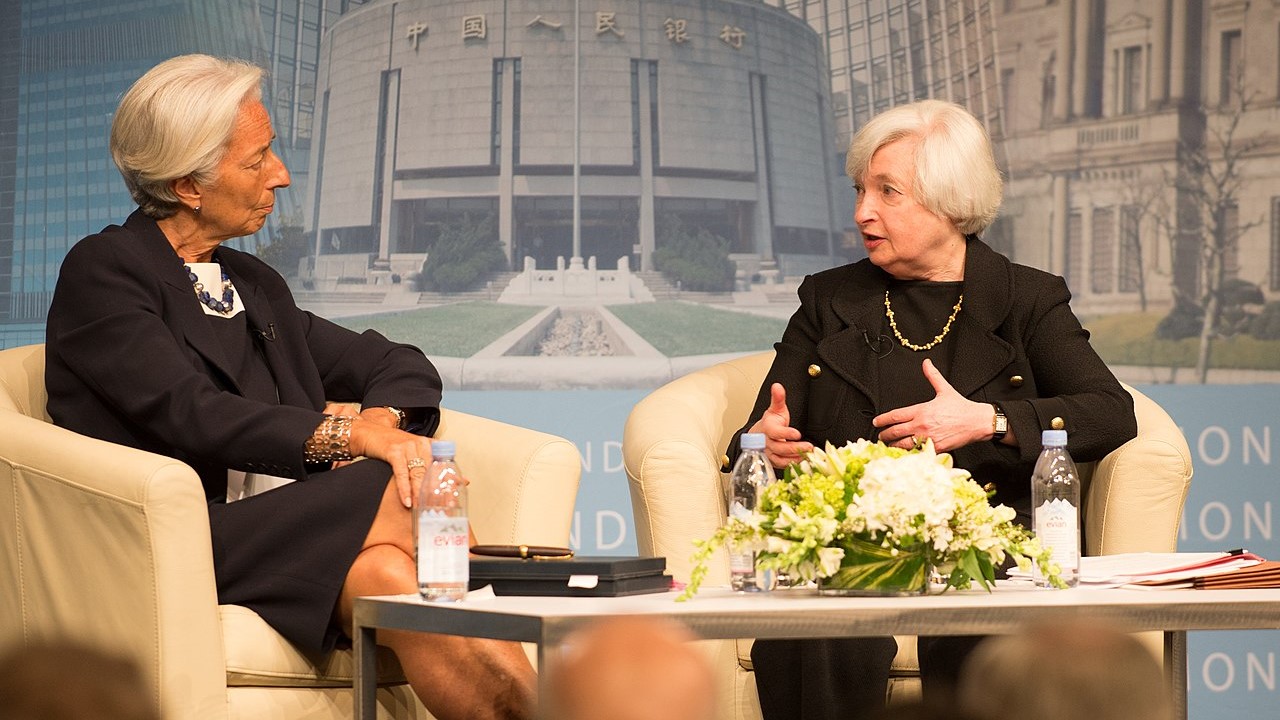Published 14 February 2023
It has become fashionable to argue that globalization is in decline. The picture is more nuanced, however. While trade in manufactures as a proportion of overall economic activity appears to have peaked in some countries, the growth of trade in services as a proportion of GDP has certainly not slowed.
Introduction
Services today account for more than two-thirds of global gross domestic product (GDP). When measured correctly, they also account for more than half of the value in international trade. The dominant position of services in today’s global economy belies mainstream theories set out by the architects of Western economic thought such as Adam Smith, Karl Marx, Jean-Baptiste Say, and David Ricardo.
Such classical thinking gave short, dismissive shrift to services. Adam Smith distinguished between productive and unproductive labor. In his view, the former yielded a value while the latter lacked material output and therefore did not. “The value of a menial servant…adds to the value of nothing,” Smith wrote.[1] In the same vein, for Karl Marx, value came attached to a commodity reflected in labor’s contribution to its production. As with Smith, services did not feature as a source of value in the school of thought Marx propounded.
More than two centuries later, technology has upended such orthodoxy. Advances in information and communications technology have undermined the notion that service industries and service infusion are intrinsically unable to generate productivity growth. The development of global value chains and their dependence on a range of intermediate services have increasingly blunted the distinction between goods and services in terms of their relative contributions to productivity. The outsourcing of support services such as back-office functions, data management, after-sales services, and so on, has combined ICT with low wages in third countries. Shrinking distance in this way has opened a door to productivity growth by increasing the capital-labor cost ratio. Technologically-driven innovation, often involving product mixes of physical and service-based inputs, has also contributed to productivity gains in services.
The future of services trade in global value chains
In recent times it has become fashionable to argue that globalization, largely reflected in value chain relationships among firms, is on the wane. Its putative demise is often linked to geopolitical tensions and technological rivalries among major powers and is reflected in product- and country-specific restrictions on trade and foreign direct investments. It is also perceived as a shift in global value chain input sourcing practices referred to variously as on-shoring, near-shoring, and friend-shoring. To the extent that this is occurring, such tendencies reflect trade-offs between cost minimization and geopolitical and geoeconomic rivalries.
A recent series of papers by Richard Baldwin[2] argued that globalization and changes in the relationships that underlie it are complex and require careful consideration if we are not to be misled by superficial analysis of their trends. Baldwin demonstrated that reliance on a simple aggregated measure of the relationship between GDP and trade doesn’t explain much and results in misleading conclusions. Contrary to prevailing wisdom, Baldwin says, globalization has not peaked, notably in the EU. For other major trading countries (China, Japan, and the United States), peaking occurred at different times rather than in the synchronization suggested by a simple measure of merchandise trade-to-GDP ratio that marked 2008 as the turning point.
The major fallacy Baldwin identified is the blanket assumption that globalization is in decline. Trade in goods has shrunk when compared in proportion to GDP growth. Changes in price levels help to explain this. Another factor is that manufacturing activity has shifted to a degree away from developed economies. One indicator is the dramatically falling share of imports within exports from China in the last few years.
But Baldwin’s key message is that the future of globalization is in intermediate services. This is clearly borne out by the data, which show continued strong growth of the category ‘other commercial services’ (OCS) as a share of total goods and services trade. Baldwin attributes this trend to factors including relatively low trade barriers to services (except in final services), developments in the digital economy that have enabled services trade, and the considerable capacity available in emerging economies to supply OCS. Commercial services are usually thought of as services supplied by businesses as opposed to governments. Many services fit into the OCS category but in classification terms some 60 per cent of them are defined as ‘other business services’ or ‘ICT including telecoms, computers, and information services.’ This discussion does not take account of the services that add value to trade but are statistically categorized as goods. A correction of this statistical quirk would further emphasize the role of modern services in globalization.
The key role of services in production and trade
Our understanding of services – in terms of their characteristics, their role in production and trade, and their sources of value – has come a long way. It is noteworthy that while the General Agreement on Tariffs and Trade (GATT) covered trade in goods from 1948, trade in services only entered the picture in 1995, when GATT became the World Trade Organization (WTO). The General Agreement on Trade in Services (GATS) is one of three main pillars of the WTO, with the other two covering merchandise trade and trade-related intellectual property rights. The GATS establishes a regulatory framework as well as mechanisms for reducing barriers to trade in services.
Given that goods and services are intertwined in production, with overlaps in many areas of policy, in an ideal world the multilateral trade regime might have found ways of fusing GATT and GATS into a more coherent whole. There would still, however, have been areas where intrinsic differences between physical and virtual products would have called for different rules. As it is, one particular inconsistency between the two sets of rules relates to investment.
In the case of goods, trade is defined straightforwardly as merchandise crossing international frontiers. For services, trade is defined in relation to both product and factor markets. This means that domestically sold output from foreign investments in the local economy, as well and the local presence of individual service suppliers, are both treated as components of international trade even though the relevant output need not cross a border. A more consistent approach in international trade rulemaking would mean treating foreign direct investment that results in the manufacture of goods, as well as the labors of individual service suppliers, as elements of international trade.
Data on services trade are more difficult to capture on account of their intangibility and heterogeneity in terms of non-standardized product offerings. Developments in the field of information technology, however, along with the rise of the digital economy, have contributed considerably to improved access to information and data, making rule-making easier.
Enhanced access to data and the capacity to process large data sets allow for greater capacity to capture economy-wide input-output interactions. Better information sets have made it possible to measure trade at a much more detailed level in value-added rather than gross terms, and this measure of trade flows improves the identification of value, be they physical or virtual in nature.
Value-added calculations are essential for separating services from goods. They also facilitate identification of the origin of products, especially in a world of value chains, where inputs are sourced from multiple countries and may cross borders several times en route to their final destinations. The detail provided by the disaggregation of sources of value also reveals the structure of trade among countries, as well as their degree of interdependence. It also becomes possible to identify the technological sophistication embedded in trade flows from specific countries and to better appreciate the nature of bilateral trade interactions. Disaggregated value-added trade data makes it easier for businesses to analyze risk in their value chains.
While much economic analysis of global value chains tends to be concerned with input sourcing only at the first tier, businesses often assess risk beyond first-tier inputs. Depending on the sensitivity of particular inputs and the scope for sourcing substitution, firms may undertake multi-tiered analysis beyond the second tier as a matter of risk management.
A case study approach to understanding services in production and trade
One way of obtaining data at a micro level is through case studies. A major project built around case studies aimed at understanding the role of services in production and trade was undertaken by the Hong Kong-based Fung Global Institute and the Singapore-based Asia Pacific Economic Cooperation Policy Support Unit in 2014-2016. The project was based on some 35 case studies of separate product lines in different firms operating predominantly in Asia.[3]
These studies revealed features of global value chains. The key finding was that when sources of value associated with the multiple inputs are separately identified, services in the aggregate generally dominate as a source of value. In addition to the standard set of services often referred to as producer services – including information and communication technology (ICT), financial services (banking and insurance), business services, transport services, and distribution services – many other services come into the production process. In a subset of 12 case studies, each value chain used between 37 and 77 different services. The median number of services used by the 12 detailed product lines in the sample was 54.
The case studies only identified the costs of inputs from product markets. Capital and labor costs were not taken into account, as this would have resulted in double counting. In the vast majority of cases, it was possible to establish that, in the aggregate, the value of services entering production exceeded the value of goods.
Another important feature of services that the case studies helped to bring out is that contrary to a long-held but mistaken conviction that many services cannot be traded (non-tradables), virtually all services can in fact be traded. Services comprising certain end-use value that is location-specific, as in the case of haircuts and restaurant services, are indeed non-tradable. But all input services can be rendered tradable through ‘bundling’. This is reflected in the fact that practically all products comprise a bundle of inputs. Thus, for example, the man who sweeps the floor in a shoe factory contributes to the value of the shoes. This reality contradicts the notion that many services are unimportant when it comes to value generated though trade, provoking a rethink of the product-service system.
Conclusion
It has become fashionable in some quarters to lament the passing of the golden age of globalization and rapid growth. The picture is more nuanced, however. The pattern and the drivers of globalization, and in some cases its intensity have changed, but not the phenomenon. It is too soon to consign globalization to the rubbish heap of history.
Globalization appears to have peaked for some countries but by no means in all. Trade in manufactures as a proportion of overall economic activity appears to have peaked in some countries, and there are a number of reasons for this. Changes in relative prices and product composition have played a part, as have structural changes in some important economies.
In contrast to manufactures, however, trade in services has certainly not peaked nor slowed its growth as a proportion of GDP. The trend shows signs of continuing. Much of this service growth is in input services, sometimes masquerading as manufactured output as a result of challenges in acquiring data on the true sources of value. There are virtually no economic activities that do not require services as part of product bundles, and service supply is plentiful in many segments of the market. How far we have come from the days when services were considered only a matter of convenience but not a source of value.
***
[1] Adam Smith. 1776. The Wealth of Nations. Book II, Chapter III: On the Accumulation of Capital, or of Productive and Unproductive Labour.
[2] Richard Baldwin. 2022. The peak globalization myth: Parts 1-4. VoxEU.org. The four papers can be consulted at https://rbaldwin.substack.com/p/the-peak-globalisation-myth
[3] Patrick Low and Gloria O. Pasadilla. 2016. Services in Global Value Chains. World Scientific Publishing, Singapore.
© The Hinrich Foundation. See our website Terms and conditions for our copyright and reprint policy. All statements of fact and the views, conclusions and recommendations expressed in this publication are the sole responsibility of the author(s).









